

2020-04-03 09:28:00 Fri ET
technology distinctive capabilities proprietary assets competitive advantages okr team leaders senior managers rare resources reinvention disruptive innovation blue ocean sustainable profitability niche andy grove intel robert noyce gordon moore moore law silicon valley semiconductor microchip
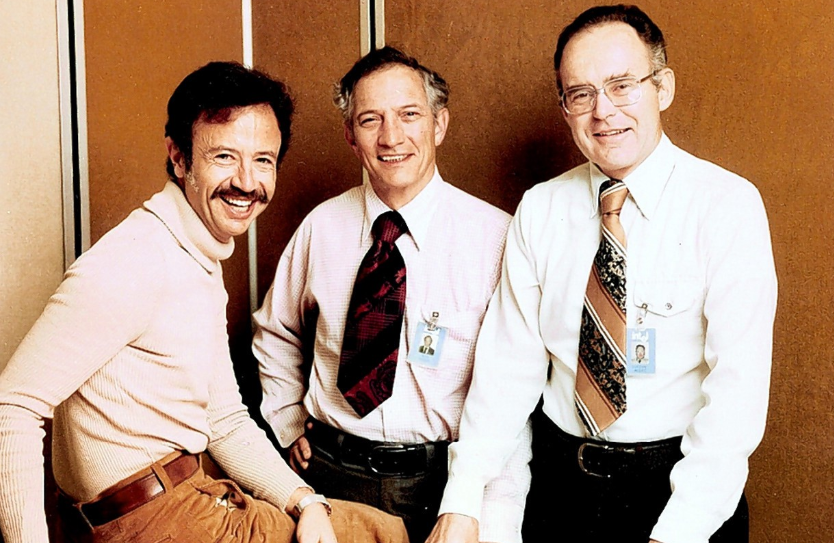
The Intel trinity of Robert Noyce, Gordon Moore, and Andy Grove establishes the primary semiconductor tech titan in Silicon Valley.
Michael Malone (2014)
In this book, the high-tech author Michael Malone delves into the business history of Intel Corporation told through the lens and lives of its co-founders, Robert Noyce, Gordon Moore, and Andy Grove. The narrative business stories of Noyce, Moore, and Grove as the Intel trinity reflect how the co-founders overcome many corporate hurdles and challenges in the hyper-competitive semiconductor industry. The Intel trinity serves as a great inspiration for many business men and women, founders, and entrepreneurs worldwide in light of the Intel best practices in the management science in the form of both objectives and key results (OKR). This book offers rich insights into how the tech-savvy co-founders steer the Intel business operations to dominate in the global high-tech sector.
Fairchild semiconductor breakthrough with a subsequent digital diaspora
In 1957, the charismatic semiconductor leaders Robert Noyce and Gordon Moore formed Fairchild Transistors as a tech subsidiary of Fairchild Camera & Instrument Company. Fairchild developed the planar process and the integrated circuit, which eventually empowered its co-inventors (e.g. Jack Kilby) to earn the Nobel Prize in Physics in 2000. With the novel introduction of the integrated circuit, Fairchild grew quickly to dominate the electronics industry worldwide.
In the 1960s, Fairchild employees witnessed how their ex-colleagues who left for other companies received rich rewards for high-tech advances and breakthroughs. Many employees started to leave Fairchild Transistors for greener pastures. Andy Grove, second-in-command at Fairchild, wanted to leave with Robert Noyce and Gordon Moore. Grove thought of Moore as a mentor and so wanted to continue to work with him. However, Grove was not so happy to learn that Robert Noyce joined the new company. Noyce was a charismatic leader, but he tended to be unreliable; in contrast, Moore was gentle and decent but sometimes airy and unable to make difficult decisions.
In July 1968, Robert Noyce, Gordon Moore, and Andy Grove co-founded the new semiconductor company Intel Corporation. After 20+ years of working together at Intel, Grove, Noyce, and Moore resembled a family more than business partners. These 3 savvy businessmen were an unholy trinity, but they made a perfect team. After Intel acquired an active interest in the market for semiconductor microchips, the tech company went public to raise $2.5 million via its IPO in 1971. A high-tech magazine published a series of news articles on the influx of silicon semiconductor companies in the San Francisco Bay Area. As a result, the computer journalist Don Hoefler christened the area *Silicon Valley*.
Robert Noyce was a charismatic semiconductor superstar and microchip inventor.
Robert Noyce was a complex man who was often contradictory. Although he was a charismatic tech leader, he was quite remote from time to time. Also, Noyce had no intention to become a celebrity, but he often seized the limelight. Noyce brought at least 3 key elements to Intel. First, he was a high-skill scientist who understood technological advances in the competitive semiconductor industry. Second, Noyce had no power struggle within the tech company. This delicate boardroom balance became a stable professional environment that served as the industry standard in Silicon Valley and other high-tech industries worldwide. Third, Noyce was able to instill loyalty in others. This unique capability empowered him to hold together the Intel team during hard times.
With his scholastic dissertation research at MIT, Noyce was a top-notch solid-state experimental physicist. Prior to his tenure at Intel, Noyce worked closely with many scientists who were familiar with bellwether transistor technology. Throughout his Intel transistor research endeavors, Noyce was clear that R&D was the top priority for long-term business success and survival. This conviction became a ubiquitous cultural meme of lean, innovative, and frugal entrepreneurship in Silicon Valley.
Gordon Moore had the clairvoyance to find the scientific fact that the computational power of integrated circuits would grow at an exponential rate.
As a kind a soft-spoken scientist, Gordon Moore strove for precision. After his Cal-Tech transistor research, Moore followed the industry trends to formulate his own theories of integrated circuits. As the CEO of Intel Corporation, he stated Moore’s Law that the number of transistors would double in a dense integrated circuit every 2 years. As the mass production of integrated circuits grew at an exponential rate, many electronic products that embodied integrated circuits would become smaller, denser, and cheaper with transistors. Across the semiconductor industry spectrum, Moore’s Law offered the prescient prediction that the whole world was going digital. What drove Intel to be the pivotal semiconductor company was its firm commitment to pursuing Moore’s Law in the lean mass production of integrated circuits.
Moore and Noyce complemented each other well, but they still lacked key business skills to manage the competitive tech company. At Intel, Moore and Noyce had to rely on Andy Grove to deal with confrontations. Moore was often able to influence Andy Grove on some key business decisions, and Moore was an insulator between Grove and Noyce.
Andy Grove developed his strategic management legacy on the basis of objectives and key results (OKR).
When Andy Grove finished graduate school at Berkeley, Moore hired him to work at Fairchild. Back then, Grove was quite arrogant, ferocious, and contemptuous of human weakness. Grove recognized in Moore a soft-spoken tech business genius who would soon become a great mentor. Over many years, Grove and Moore built great professional and personal relations. Moore was a technical leader (but not a micro-manager), and Grove steered technical discussions and conference calls in the joint presence of Moore and Noyce at Fairchild and Intel.
Through his business career at Fairchild and Intel, Andy Grove became famous as a prolific business management author. Grove published a college textbook about semiconductor devices. He also published great business books about managing high-tech business enterprises.
In one of these business books, High Output Management, Andy Grove introduced the simple and effective concept of objectives and key results (OKRs). With regard to its main business objectives, the company would need to carry out specific tasks to achieve major measurable results with prescient actionable insights. In this light, the strategic manager had to ensure the seamless integration and implementation of an effective mechanism to translate concrete, specific, and measurable actions into key results on a numerical scale (e.g. dollars, items, and percentages etc).
In 1999, John Doerr, a business partner at the venture capital firm Kleiner Perkins, introduced the Grove concept of OKRs to the Internet search startup Google. This concept took hold and subsequently became popular and central to the ubiquitous business culture at Google, Twitter, LinkedIn, Uber, and so on. Strategic managers might share OKRs across the organization with the clear intention of empowering teams to focus joint efforts on ultimate business goal attainment. OKRs turned out to be one of the major management legacies of Andy Grove and further overlapped with a few other performance management frameworks such as key performance indicators (KPIs) and the balanced scorecard.
Intel Corporation was a flat singular high-tech organization.
At Intel, employees assumed multiple duties with ready access and equality. Intel acted like a substantial scientific research department. Middle managers had more responsibility than what other companies gave to vice presidents. Andy Grove was the main force that focused on the day-to-day operations with cost-effective means. Meanwhile, Grove had to align the major business operations well with the longer-term strategic goals of both Moore and Noyce. From the 1970s onwards, Intel grew at a fast pace to deliver a series of electronic products ahead of the semiconductor industry worldwide. Among several memory products, Intel introduced a dynamic random access memory (DRAM) microchip. In the U.S. history of semiconductors, this microchip became highly important to the markets for computers, calculators, and video games etc. With these high-tech products, Intel was able to dominate in each of the vertical markets in the semiconductor industry.
DRAM proved to be popular worldwide, and many companies that embedded the DRAM microchips into their electronic products demanded better quality controls and second-source suppliers. Noyce negotiated a good deal with another company that agreed to pay $2 million to Intel for second-source transistor fabrication rights, plus royalty rights on sales from 1972 to the early-1990s. This deal doubled sales revenue for Intel. Noyce was already well-known for his invention of the integrated circuit; now he had earned the reputation as a world-class business leader.
One of the landmark Intel business strategies was Operation Crush. The campaign redefined the 8086 microchip as a service solution that was easier to implement in electronic product design. This campaign further merged transistor technology with technical support services at Intel. Prior to the launch and execution of Operation Crush, Intel often focused on the technical specifications and performance metrics of microprocessors. Operation Crush upgraded Intel with new cash flows to design a more cost-effective version of the 8086 microchip. Passing this corporate hurdle and milestone, Intel earned a major business deal with IBM to enter the new market for personal computers (PC). Intel scaled up the PC business at a fast pace. As a result, the IBM deal marked the end of fierce competition for Intel.
As the Intel trinity, the executive management team worked well together. Noyce had left the front lines to become chairman of the board of directors, Moore became CEO, and Grove steered the day-to-day business operations. Later Noyce chose to step down due to family reasons, and he continued to mentor young high-tech entrepreneurs. Although Moore assumed to the role of Intel CEO, he functioned a bit more like chairman of the board of directors. Moore had to leave most day-to-day business operations to Grove. Across the semiconductor industry landscape, Grove proved to be one of the greatest businessmen and strategic thinkers of the modern digital age.
Intel faced fresh hurdles and challenges in the new millennium.
In 1989, Intel launched the i486 microprocessor, which doubled the computational performance of the prior 80386 microchip. Intel had its first billion-dollar quarter in October 1990 and then finished the year with over $4 billion in total sales revenue. Intel was ready to take advantage of the high-tech industry bubble in the 1990s.
To encourage tech companies to adopt the new i486 microchip, Intel launched the *Intel Inside* advertisement campaign. This ad campaign helped Intel become the second-best known industrial brand (after Coca-Cola) in the world by 2000.
In 1993, Intel announced the Pentium microprocessor, which was at least 5 times more powerful than the prior i486 microchip at the same price. Despite some early product bugs and subpar public relations, Pentium turned out to be one of the most successful microprocessors of all time.
In 1998, the Federal Trade Commission (FTC) accused Intel of using its dominant market power to monopolize the semiconductor industry. The Justice Department had already run Microsoft through the wringer for similar antitrust charges (so Bill Gates and his company had to go through many years of ordeal in the form of both litigation and regulation). In comparison, Andy Grove was wise enough to put Intel interests above his ego and then settled the FTC antitrust case by agreeing to alter many internal business practices. As a result, Intel would avoid (over)charging its business clients that chose to purchase microchips from other transistor providers such as Samsung and TSMC.
In the late-1990s, Intel used TV campaigns to promote its public image and product line. Grove also published business books that revealed how he managed the tech titan during difficult times. All these efforts made Intel one of the favorite high-tech companies in America. Time magazine praised Andy Grove as Person of the Year in 1997, which was 50 years after the key invention of the semiconductor transistor.
As Intel CEO, Grove masterfully managed the semiconductor company during the growth spurt from 2000 onwards. Grove eventually stepped down as CEO of Intel and later became chairman of the board of directors. At this point, the 30-year reign of the Intel trinity came to an end. Few companies would achieve such success in the course of a few decades. Over just one generation, Intel transformed itself from a mid-size electronics company to a major world-class tech titan.
The business stories of Noyce, Moore, and Grove as the Intel trinity show how the co-founders overcome corporate hurdles and challenges in the hyper-competitive semiconductor industry. The Intel trinity serves as a wonderful inspiration for many business men and women, founders, and entrepreneurs worldwide in light of the Intel best practices in the management science in the form of both objectives and key results (OKR). The 3 Intel co-founders steer the major business operations to dominate in the global high-tech sector.
This analytic essay cannot constitute any form of financial advice, analyst opinion, recommendation, or endorsement. We refrain from engaging in financial advisory services, and we seek to offer our analytic insights into the latest economic trends, stock market topics, investment memes, personal finance tools, and other self-help inspirations. Our proprietary alpha investment algorithmic system helps enrich our AYA fintech network platform as a new social community for stock market investors: https://ayafintech.network.
We share and circulate these informative posts and essays with hyperlinks through our blogs, podcasts, emails, social media channels, and patent specifications. Our goal is to help promote better financial literacy, inclusion, and freedom of the global general public. While we make a conscious effort to optimize our global reach, this optimization retains our current focus on the American stock market.
This free ebook, AYA Analytica, shares new economic insights, investment memes, and stock portfolio strategies through both blog posts and patent specifications on our AYA fintech network platform. AYA fintech network platform is every investor's social toolkit for profitable investment management. We can help empower stock market investors through technology, education, and social integration.
We hope you enjoy the substantive content of this essay! AYA!
Andy Yeh
Chief Financial Architect (CFA) and Financial Risk Manager (FRM)
Brass Ring International Density Enterprise (BRIDE) © 2013-2023
Do you find it difficult to beat the long-term average 11% stock market return?
It took us 20+ years to design a new profitable algorithmic asset investment model and its attendant proprietary software technology with fintech patent protection in 2+ years. AYA fintech network platform serves as everyone's first aid for his or her personal stock investment portfolio. Our proprietary software technology allows each investor to leverage fintech intelligence and information without exorbitant time commitment. Our dynamic conditional alpha analysis boosts the typical win rate from 70% to 90%+.
Our new alpha model empowers members to be a wiser stock market investor with profitable alpha signals! The proprietary quantitative analysis applies the collective wisdom of Warren Buffett, George Soros, Carl Icahn, Mark Cuban, Tony Robbins, and Nobel Laureates in finance such as Robert Engle, Eugene Fama, Lars Hansen, Robert Lucas, Robert Merton, Edward Prescott, Thomas Sargent, William Sharpe, Robert Shiller, and Christopher Sims.
Follow AYA Analytica financial health memo (FHM) podcast channel on YouTube: https://www.youtube.com/channel/UCvntmnacYyCmVyQ-c_qjyyQ
Follow our Brass Ring Facebook to learn more about the latest financial news and fantastic stock investment ideas: http://www.facebook.com/brassring2013.
Free signup for stock signals: https://ayafintech.network
Mission on profitable signals: https://ayafintech.network/mission.php
Model technical descriptions: https://ayafintech.network/model.php
Blog on stock alpha signals: https://ayafintech.network/blog.php
Freemium base pricing plans: https://ayafintech.network/freemium.php
Signup for periodic updates: https://ayafintech.network/signup.php
Login for freemium benefits: https://ayafintech.network/login.php
If any of our AYA Analytica financial health memos (FHM), blog posts, ebooks, newsletters, and notifications etc, or any other form of online content curation, involves potential copyright concerns, please feel free to contact us at service@ayafintech.network so that we can remove relevant content in response to any such request within a reasonable time frame.
2019-11-07 14:36:00 Thursday ET
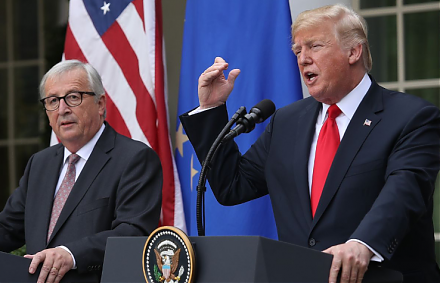
America expects to impose punitive tariffs on $7.5 billion European exports due to the recent WTO rule violation of illegal plane subsidies. World Trade Org
2018-12-23 13:39:00 Sunday ET
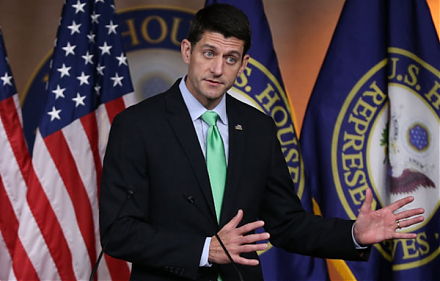
The House of Representatives considers a government expenditure bill with border wall finance and therefore sets up a shutdown stalemate with Senate. As fre
2018-10-01 07:33:00 Monday ET
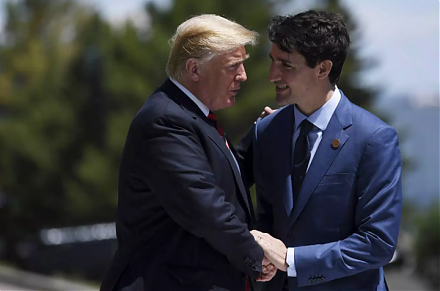
President Trump announces the new trilateral trade agreement among America, Canada, and Mexico: the U.S.-Mexico-Canada Agreement (USMCA) replaces and revamp
2018-05-21 07:39:00 Monday ET

Dodd-Frank rollback raises the asset threshold for systemically important financial institutions (SIFIs) from $50 billion to $250 billion. This legislative
2019-05-11 10:28:00 Saturday ET

The Trump administration still expects to reach a Sino-U.S. trade agreement with a better mechanism for intellectual property protection and enforcement. Pr
2020-04-17 07:23:00 Friday ET
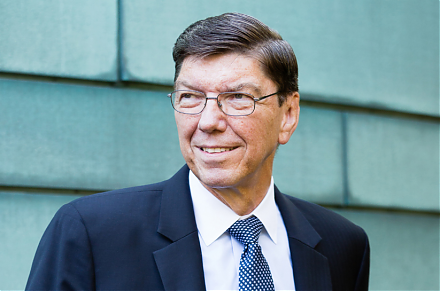
Clayton Christensen defines and delves into the core dilemma of corporate innovation with sustainable and disruptive advances. Clayton Christensen (2000)